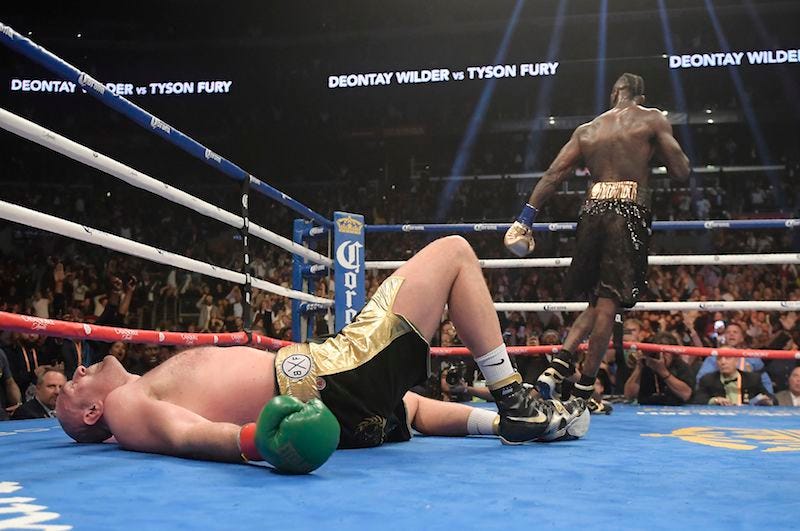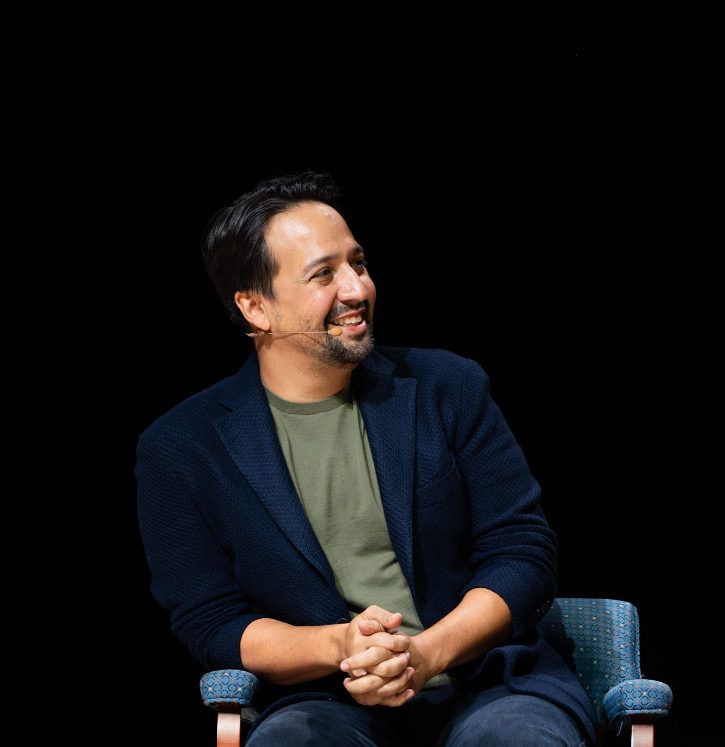
Boxing is a niche sport. Most fights do not capture the imagination of casual fans outside the smallish community of fans. While the biggest fight aficionados know every fighter of note and make pound-for-pound lists (essentially ranking how good fighters are without regard to size), it is typically only one or two who graduate to mainstream recognition. Maybe you have a huge social media following, like Ryan Garcia. Maybe you reliably sell out stadiums, like Saul “Canelo” Alvarez. Maybe you are a human highlight reel.
Due to that final possibility, you might know Tyson Fury.
Fury beat Wladimir Klitschko to win the lineal heavyweight title in 2015, which lifted him to the pinnacle of the division, but that is not why you might know him. No, Fury’s claim to fame came three years later, when he fought Deontay Wilder, the hardest puncher in boxing today and possibly the hardest in boxing history. For the better part of 11 rounds, Fury, despite being six-foot-nine and well over 250 pounds, dodged around the ring like a lightweight, slipping Wilder’s biggest punches.
Then in the 12th round, Wilder landed a crushing right hand on Fury’s chin. As Fury rocked backwards, already beginning to fall to the canvas, Wilder slammed a left hook home. Fury appeared unconscious as he hit the ground. Wilder did a victory dance. But Fury somehow jolted awake at the referee’s count of six, then hauled his bulk off the canvas and was up by nine. (If you have not seen this clip, I urge you to seek it out — words fail to do it justice.) From there, incredibly, Fury continued outmaneuvering Wilder for the rest of the fight and finished the stronger of the two.
Fury had to settle for a draw as the judges turned in some puzzling scorecards, but he annihilated Wilder in their rematch and soundly defeated him again in their trilogy bout. Fury still owns the lineal heavyweight title and is undefeated, but his claim to worldwide fame is the instantly-viral clip of him rising from the dead in his first fight with Wilder. It made him a household name. When I briefly talked boxing with
The Spectator
’s very own Mikaella Tortusa ’25 last week, the first name she mentioned was Tyson Fury.
Oleksandr Usyk, who currently holds three heavyweight title belts, is not a mainstream star. (Due to boxing’s bizarre organizational structure, there can be multiple champions in a division at the same time.) The goal, naturally, is for Usyk and Fury to fight, which would result in a single unified champion in the heavyweight division. When you have one champion in a division, everything becomes infinitely easier. The champion is easier to market to casual fans. Fighters know exactly who they have to take down to become top dog. If Fury and Usyk fight, the winner will be the first undisputed heavyweight champion since Lennox Lewis in 1999.
But Fury seems not to want the fight. Instead of taking on Usyk to unify the belts, he is fighting Francis Ngannou next month, a mixed martial artist with extremely little boxing experience. Ngannou is a massive puncher, so there is a remote chance he could land a Hail Mary blow and drop Fury, but the odds are terrible. Whenever a fighter tries to cross over into another sport, things go badly. Michael Jordan was a mediocre baseball player — in the minor leagues. MMA star Conor McGregor got battered by Floyd Mayweather when McGregor decided to give boxing a try in 2017, even with Mayweather long past his peak. Ngannou is the lowest-risk opponent Fury could take on, with the highest financial windfall.
So Usyk is left to wait. Every now and then, Fury will post an unhinged social media message, taunting Usyk or calling him a “shithouse.” (Fury is, you might be surprised to know, an advocate for mental health.) And here’s the worst part: despite having a better quality boxing resume than Fury, Usyk’s lesser star power means he has fewer alternative fights. So, while Fury messes around with MMA fighters, Usyk has to settle for less lucrative mandatory bouts until — if it even happens at all — Fury deems him a worthy opponent.
It is a frustrating situation. Usyk, who has shown nothing but the intent to challenge himself — he has won most of his honors in the lighter cruiserweight class and made the ambitious leap to heavyweight because there was nothing left for him to accomplish at his natural weight — gets screwed, while Fury’s chicanery gets rewarded. Such is the nature of the boxing game.
The irony is that Fury would be a heavy favorite in a fight with Usyk. He is so much bigger than Usyk, and is devastatingly effective at leaning on his opponents to tire them out, that it is hard to imagine Fury being troubled significantly. All the same, Usyk has a better chance at beating Fury than anyone else in the world, and the leading theory is that Fury is scared enough of a blemish on his undefeated record that he doesn’t think the fight is worth it.
Boxing fans are left in the lurch along with Usyk. Big fights have limited lifespans; if they are left to marinate for too long, one or both fighters starts to decline and the resulting product is sadly lacking. Countless fights have failed to live up to expectations because they passed their sell-by date. The biggest fight of the 2010s was Mayweather against Manny Pacquiao — boxing fans clamored for it starting in 2009, but it didn’t happen until 2015. Though demand was still high, the fight itself fell wildly short of hopes and significantly short of expectations. Fury-Usyk could suffer a similar fate.
























